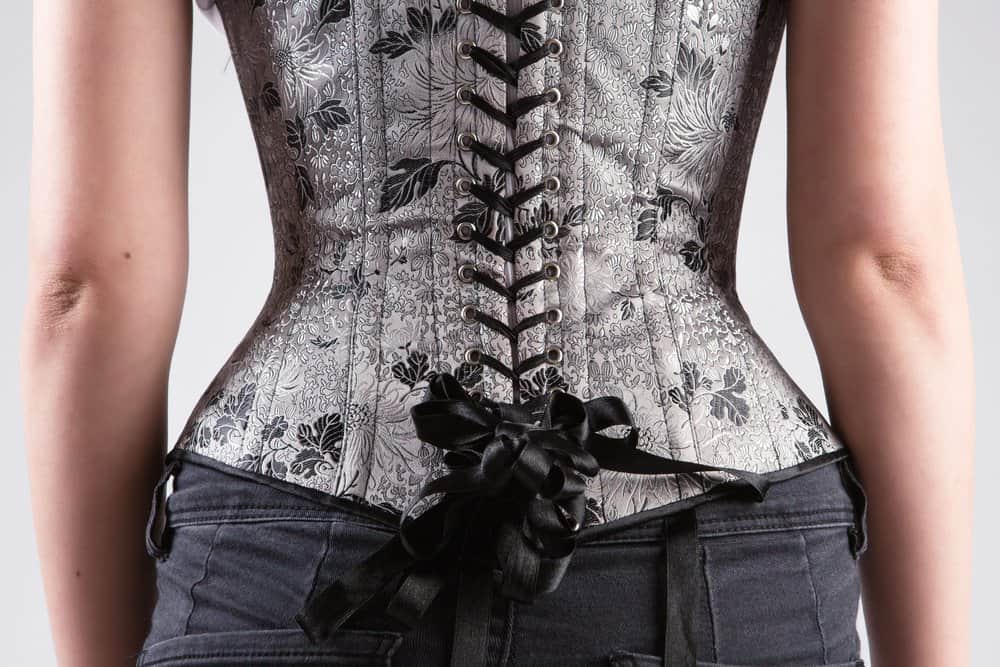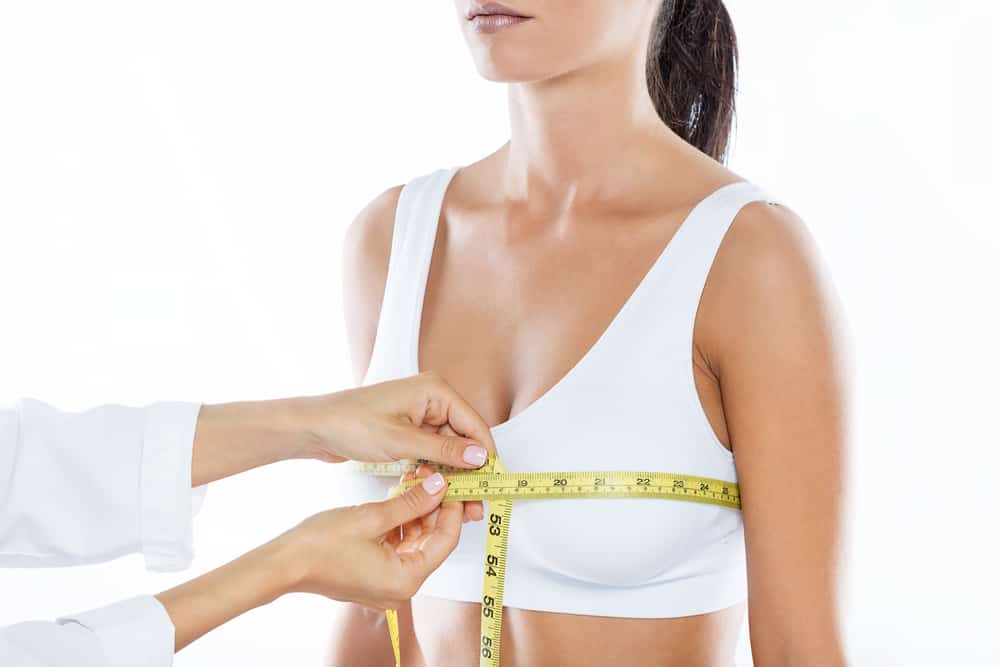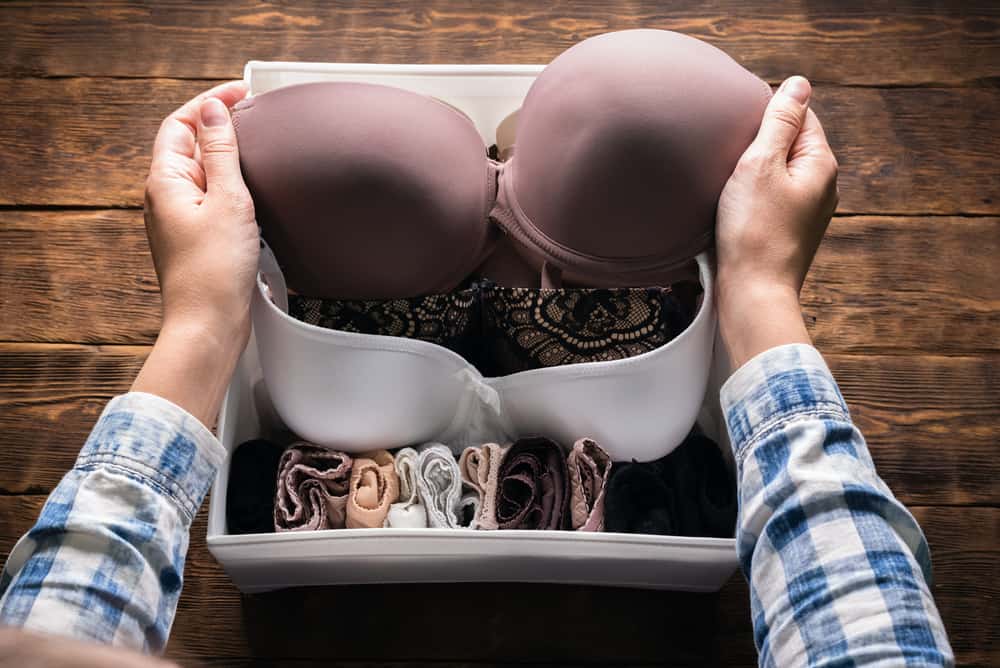Bras are kind of the worst. It’s hard to find a good fit in a flattering style, and over time they warp and stretch, forcing you to start the process of finding one all over again. If you’re tired of shoulder pain, welts, and general discomfort, you might be looking to make a change.
Though it may seem impossible to give up wearing a bra altogether, it actually might be an option in many situations for many people. But just as in eras past, there is a certain societal expectation about what underwear is appropriate to wear in public. If you work in a more formal setting, like a corporate office, you might be under even more scrutiny. If you have a larger chest, you might worry about the physical discomfort of lacking support as well as looking appropriate.
In this article, we’re going to explore some bra alternatives that are actually practical for everyday life. Whether you’re looking for some work-appropriate nipple coverage, an option to reduce movement and bounce, or just something to take the weight off your aching shoulders, we’ve got something that can work for you.
Is Going Braless an Option?
Bras are a relatively modern invention. While skirts and shirts have been around since practically the dawn of time, bras as we know them didn’t appear until around 1920. That means that for most of human history, women were braless.
Of course, humans are humans, and bust support was still considered necessary, particularly for women participating in physical labor, which includes most women of the past. In an age of grinding your own grain, doing hundreds of pounds of laundry by hand, and hauling buckets of water, something had to be done to comfortably keep the girls under control.
A Brief History of Breast Support
One of the earliest solutions was simply a fitted underslip, or shift. This base layer garment would fall from the shoulder to the mid-calf in most cases. Often, it would be cut to fit very tightly against the torso, lacing up the front or sides. This would help keep the bust supported throughout a woman’s busy day.
During other historical periods, particularly in parts of Asia, wrapping the chest with a strip of cloth in a way similar to bandaging could be done to hold up and support breasts, or be used to flatten them out. The practice of binding is still used today, often for the purpose of reducing the appearance of breasts.
And of course, the corsets of the 19th-century are one of the most talked-about and controversial garments in history. But even before innovations created steel supports that allowed for a small number of women to adopt the extreme fashion of tightlacing, boned support garments that covered most of the torso had been common in Europe for several centuries.
All of these old solutions were used by our ancestresses because they were effective. Bust support changed to suit changes in fashion and take advantage of new technology. However, all of these old solutions can still be used and adapted today. You can flex your DIY skills to create your own support garment with help of a YouTube tutorial and some fabric. You can also find specialty sellers who make historical reproductions of these garments for reenactors and enthusiasts.
If you’re looking for more of a ready-made option that feels a tad more modern, there are still plenty of options, some of them taking inspiration from solutions of the past, and some that are a bit more innovative.
Common Bra Alternatives

For a simple solution you can incorporate into your wardrobe right away, there are plenty of bra-free options to give you what you need. Here are a few of our top picks.
Camisoles and Tank Tops
If you don’t need as much support, wearing a base layer like a camisole or tank top might be enough to give you some security. Just like the tight-fitting shifts of the past, you can choose a tank top with a tight fit to help hold your chest in place. An extra layer between you and your outer clothing can also help reduce the visibility of your nipples.
Some camisoles will specifically have an extra layer around the chest, often with a fitted band under that goes under the breasts to help hold your bust in place a little better. Having that special boob shelf adds yet another layer of protection, which is great if you work in a chilly office or happen to have dark areolas that can show through thinner material.
Some camisoles will even have cups built in to give you more definition. This is a comfortable option that prevents the uni-boob effect that some people dislike from camisoles with shelf bras.
Nipple Covers
When support isn’t an issue–maybe you have smaller breasts, a muscular chest, or maybe you just like to let them go with the flow–you can focus on just covering the nipples.
There are situations where you might like to be a little more modest, keeping your nipples from drawing attention to themselves. It might be annoying to be having a serious conversation with a coworker, only to realize they aren’t making eye contact with you because someone played with the office thermostat again.
Besides issues of modesty, nipple covers can also enhance comfort. Even male runners are known to wear them for marathons because chafe can be a real issue. If your skin is sensitive, you might appreciate the extra protection.
Some people will even layer nipple covers under other support garments like bralettes and camisoles on days when their hormones have them feeling extra tender.
Layering
If you live in a colder climate, you may actually be in luck. If your main concern is nipple coverage in particular, layering up will keep you warm and make sure no one is the wiser about your braless freedom. There are a few ways you can layer your clothing to help give you coverage, and even some support.
If you’re wearing a skirt or dress as your daily clothing, you can take a retro tact and wear a full-length slip under your clothing. Most modern style slips will have cups, usually triangle-shaped with darts to help create a shape. The cups will often be lined with an extra layer to help give more coverage. That can be your innermost layer, providing warmth and modesty.
Even if you are wearing trousers, you can still layer the clothing on your torso. You can choose a first layer based on how much support you need. If you just need coverage, you can choose a looser tee-shirt. A tighter, stretchy layer can give more support if you need some reduction of movement. Choosing a top in a knit material will help give it more stretch. You can even wear it a size smaller than you normally would to help it fit close enough to your chest to keep your bust from moving too freely.
Choosing a thicker material for your top layer, particularly in a loose fit can help keep you covered and discreet. A thick sweater in a relaxed cut can easily obscure your chest so that you won’t need to worry about going braless in public. A busy pattern can also help distract the eyes and make it less obvious that you’re going unsupported.
Chest Binding
As mentioned above, people have used cloth wrappings as a form of coverage and protection for the chest for centuries. In modern usage, it has typically become a way to minimize the appearance of breasts to create a more androgynous look. For people looking to create a more masculine figure, there are some commercially available breast binding options. Some people may also use bandages for this sort of chest reduction, but they can irritate the skin and easily be applied too tightly.
Even if you aren’t trying to dramatically reduce your bust, you can still use a sort of chest wrapping as an alternative to bras. A long strip of linen or cotton fabric can be used in the Japanese sarashi style to secure your bust without such strong compression. There are a couple of different wrapping methods, so you can choose whichever works best for you.
Never wrap your chest too tightly, as this can cause injury and reduce your lung capacity. Wrapping does take time to practice and if may add a few extra minutes to your morning routine, but it can give you a comfortable alternative to other bust supports as long as you do it safely and correctly.
Corsets

There seems to be no garment in history that is as fascinating and controversial as the corset. Stories have turned them into mythological things of beauty and of horror.
However, clothing historians have been trying to spread the word for years now that most of the things we believe about corsets are patently false. Our ancestresses could indeed move in corsets and even working women who did a good deal of physical labor each day would wear a boned support garment.
Still, does corsetry have any place in a modern wardrobe? It certainly can. If you have a heavier chest, particularly on a smaller frame, corsets can support your bust much better than most bras. Modern corsets tend to be full-length torso garments that distribute the weight of your breasts around your waist. This takes the strain off your shoulders and helps straighten your posture. It also creates a smoothing effect around your torso, eliminating that dreaded bra-bulge look.
While many modern waist-trainers take inspiration from historical corsets, only some of them offer bust coverage and support. Fortunately, interest in corsetry has been reignited in recent years. There are many resources online for finding corset makers who supply actors and reenactors with these support garments. There are also many tutorials and patterns online for how to make your own if you’re crafty and want to ensure a perfect custom fit.
Bandeaus
Bandeau bras are a great option for smaller chests. These garments blur the lines between camisoles, bralettes, and bras. In a way, they can be classified as any of these, but they are also their own unique chest support option.
A bandeau is a strapless tube-like garment that typically is pulled on over the head. It wraps around the chest, supported by elastic material to keep it in place. Some bandeaus will have some cup shaping, but most are very simple rectangular pieces, lined to give nipple coverage. They give minimal bounce support but help keep everything looking smooth under your clothing.
Bandeaus are a great option if you like to wear slouchy and relaxed tank tops that may have open armholes. By giving you a wider bad of coverage around the underarm, it can help you avoid a more provocative look you might not want.
Bralettes
In recent years, bralettes have been having a moment. These barely-there bras are one of the easiest transitions to make if you want to leave the world of underwires behind. Bralettes are a more relaxed type of bra that doesn’t attempt to reshape your chest the way most bras do, but rather gently supports it closer to how your breasts naturally fall.
Bralettes are typically stretchy and can mildly compress your chest depending on the style. Most don’t have defined cups, so for women who are between sizes or have asymmetrical breasts, it can be a better fit. Bralettes are becoming more and more available in different cuts and styles that can even suit larger chests.
If you’re looking for a style that gives both support and coverage in a more toned-down way, bralettes might be the best option for you. They can also be really feminine and beautiful without the discomfort of a bra. Many people even style outfits around lacy bralettes, letting them peek out of off-the-shoulder tops, or be displayed by low-cut backs.
Sports Bras
While this is still technically a bra, it can be a good alternative to a lot of the underwire contraptions that make you feel trussed up like a Thanksgiving turkey. If you need more movement control, sports bras are the best. They are specifically designed to reduce movement and strain during activity. In fact, most researchers agree that during exercise is the only time when women truly benefit from wearing a bra.
Sports bras tend to have thicker straps and bands than your average bra, making them distribute the weight of your chest over more surface area. This can help reduce discomfort and help you keep a larger chest locked down. If you aren’t fond of bras that push you up and make your chest feel on display, sports bras tend to have the opposite effect, smoothing everything down.
Most pull on over your head, but some have clasps or even zipper fronts. This can be more comfortable to put on for people with larger chests.
Getting a Comfortable Fit

One of the main reasons why bras plague us so much is that they don’t fit us properly. Very few of us get our bras custom made, or even custom-tailored, so we’re at the mercy of commercial sizing, which isn’t always accurate. Unfortunately, this means that bra shopping can involve a lot of trying things on in a couple of different sizes to zero in on what fits you best.
Fortunately, you can get an idea of your size by measuring yourself at home or having a professional do it at a lingerie shop. But, of course, different bra cuts and styles can fit differently. Some might be more comfortable for you, but others might not give you the support you’re looking for.
While some of our bra alternatives don’t rely on your measurements much, for some options, you still need to know your sizing. Without knowing your basic measurements (ribcage and bust circumference) even fitting a sports bra can be tricky. Knowing your waist size is essential as well if you decide to purchase a corset to use instead of a bra.
Customizing
To get something that fits you perfectly, you can always go the custom route. There are companies that provide virtual fittings online to help you get a bra that fits your unique shape and size. Etsy is home to many small, bespoke lingerie makers and Uplift from Canada runs an online custom bra service as well.
If you are interested in corsetry, there are many custom corset makers as well. Since this is a garment that covers more of your body, it can be worth investing in a custom fit. Customized clothing was commonplace for our ancestors and allowed these very structured garments to be much more comfortable for the wearer.
It is a lot more expensive to get a bra or corset custom made. For some women, though, they see it as an investment. Instead of purchasing many inferior garments over time, they invest a larger sum of money into one or two high-quality pieces that will last them for years.
Your Changing Body
There seems to be a common narrative that once we’re out of our teen years, our body should be “finished.” We should have one shape and size that we stick with for the rest of our lives and veering from that is a bad thing. The truth of being human, of course, is much more complicated.
For women especially, our bodies can change quite a bit. If you’ve had children, your body might not ever be exactly the same—and that’s not a bad thing. Your breasts can fluctuate quite a bit throughout your life thanks to hormonal changes.
If you’ve recently had a baby, you may need to alter or change your normal bust support garments. Bralettes are great for new moms because they give you support that accommodates your fluctuating bra size, and they’re easy to nurse in. But no matter how your body has changed or is still changing, you deserve to be comfortable and look your best– no matter how you define what your best is.
Going Braless

There’s no real reason to wear a bra every day. It’s a modern garment that has become popularized as giving breasts the “right” appearance by our current beauty standard. What is right and what is beautiful has shifted constantly throughout history, and we may be in the middle of it shifting again.
More women are looking at solutions, both new and old, to giving whatever support and coverage they feel they need according to their lifestyle and preferences. We hope that this guide has given you some inspiration to branch out and try a few alternatives if your bra has been getting you down lately. It’s just a matter of having the confidence to make a change.
